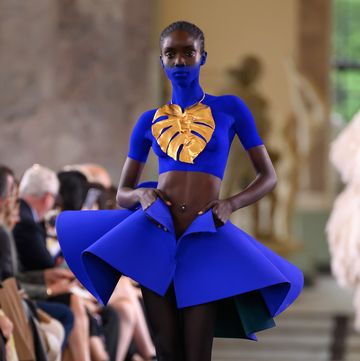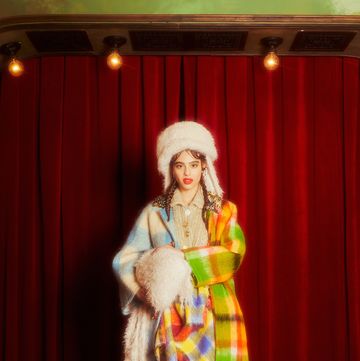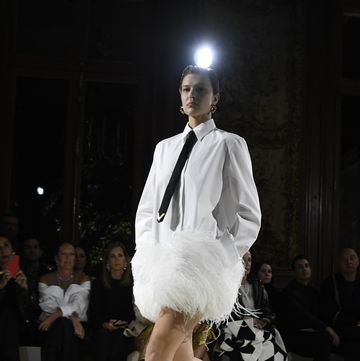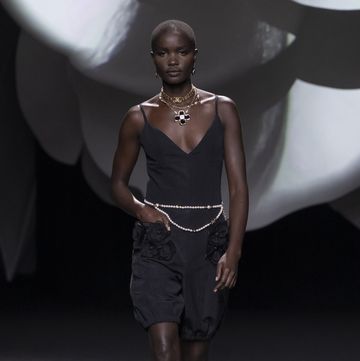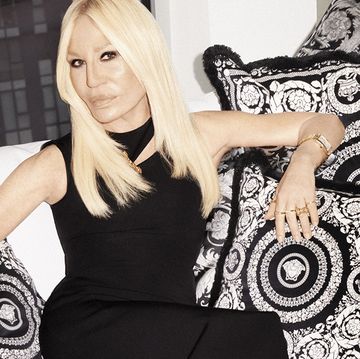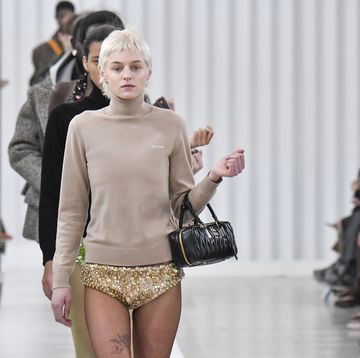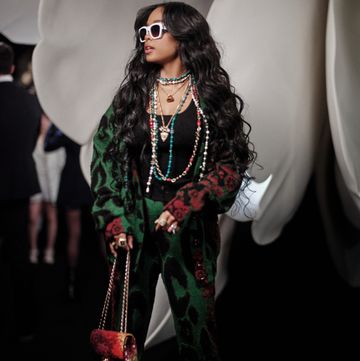Last night at the New York Public Library, Marc Jacobs held his Fall 2023 runway show, which began promptly at 7:30 p.m. and ended three minutes later. The 29 models did a full two turns, and then they were done. People in attendance didn’t even understand what was happening until at least a minute in, which is when they realized they’d better take out their phones or they wouldn’t be able to capture anything.
It was an obvious contrast to two fashion spectacles that had taken place days earlier and seemed engineered for social media. Pharrell Williams’s highly anticipated debut at Louis Vuitton began with a gospel choir and original music; Beyoncé, Rihanna and Zendaya were all in attendance. At Jacquemus, guests were seated in rowboats on the Grand Canal of Versailles. Both shows were featured prominently on Twitter for hours before and after.
But Marc Jacobs was truly an “if you know, you know” affair. The show notes were written by ChatGPT, which was convinced the collection was a triumphant fusion of “masculine tailoring and feminine elegance.” It should have felt dystopian, this show with notes composed by artificial intelligence and a run time that reflected our attention deficit in the age of short-form content. But in fact, the show was far more joyous than the doomscroll that inspired it. It felt ironically, enjoyably analog—a reminder that fashion can still be fashion without the bells and whistles.
That said, Jacobs hasn’t completely rejected modern-day consumption, either. In 2020, alongside artist Ava Nirui, he launched his diffusion line Heaven. With monthly drops inspired by the ’90s grunge aesthetic, it’s a teen fever dream. Last year, photographer Kyoichi Tsuzuki—whose series Happy Victims documented fashion fans from 1999 to 2004—photographed nine Marc Jacobs Heaven supercollectors. Despite being affordable and not quite high-fashion, it is the only brand of late to really welcome Gen Z levels of pandemonium and obsession.
Thanks to Heaven, Jacobs can use his runway collections—stocked only at Bergdorf Goodman—to appeal to a different, select group of fans: the kind who remember a time when fashion’s front rows were occupied only by writers scribbling in notepads perched on their laps. The kind who claim they’re there to experience the collection, not document it on social media.
Last night, you just had to be there. If you weren’t, all you got was the same quick snippet of video that appeared across fashion insiders’ accounts on social media, in which it was nearly impossible to see the ’80s-inspired clothing. For the record, each model had crimped blonde cyberpunk hair, deep red lips, intense stares and stomps. They wore stockings that cut off at their ankles with white socks and pointed black ballet flats. There were black sequined mini dresses, dainty little leather gloves, and sharp shoulder-pad striped suits. Everyone looked vaguely like Nancy Spungen.
The three-minute show itself was certainly a commentary on the way we flick through images, and how fleeting their existence is after they’ve been consumed. And the robot notes might have felt like a “The end is near” moment to some of the writers and editors in the crowd. But to me, the whole thing read as a relief. The notes were terribly written, cementing the idea that to really put pen to paper, you need human hands. And although, yes, everyone was talking about the three-minute showtime and not the clothing, there’s no denying the whole thing made people pause to think about what Jacobs was trying to say. Maybe that pause was the point. After all, he’s one of the few designers who have been able to hold people’s attention for decades.
Tara Gonzalez is the Senior Fashion Editor at Harper’s Bazaar. Previously, she was the style writer at InStyle, founding commerce editor at Glamour, and fashion editor at Coveteur.







